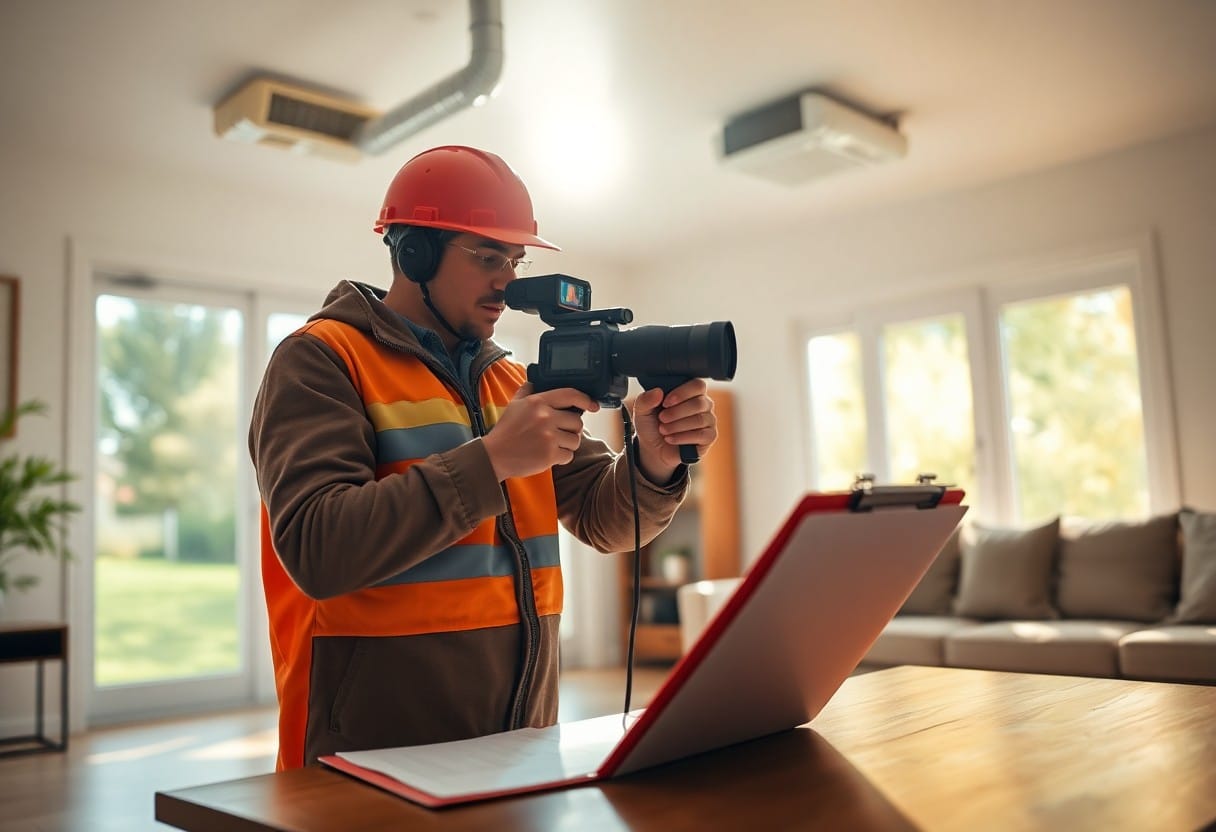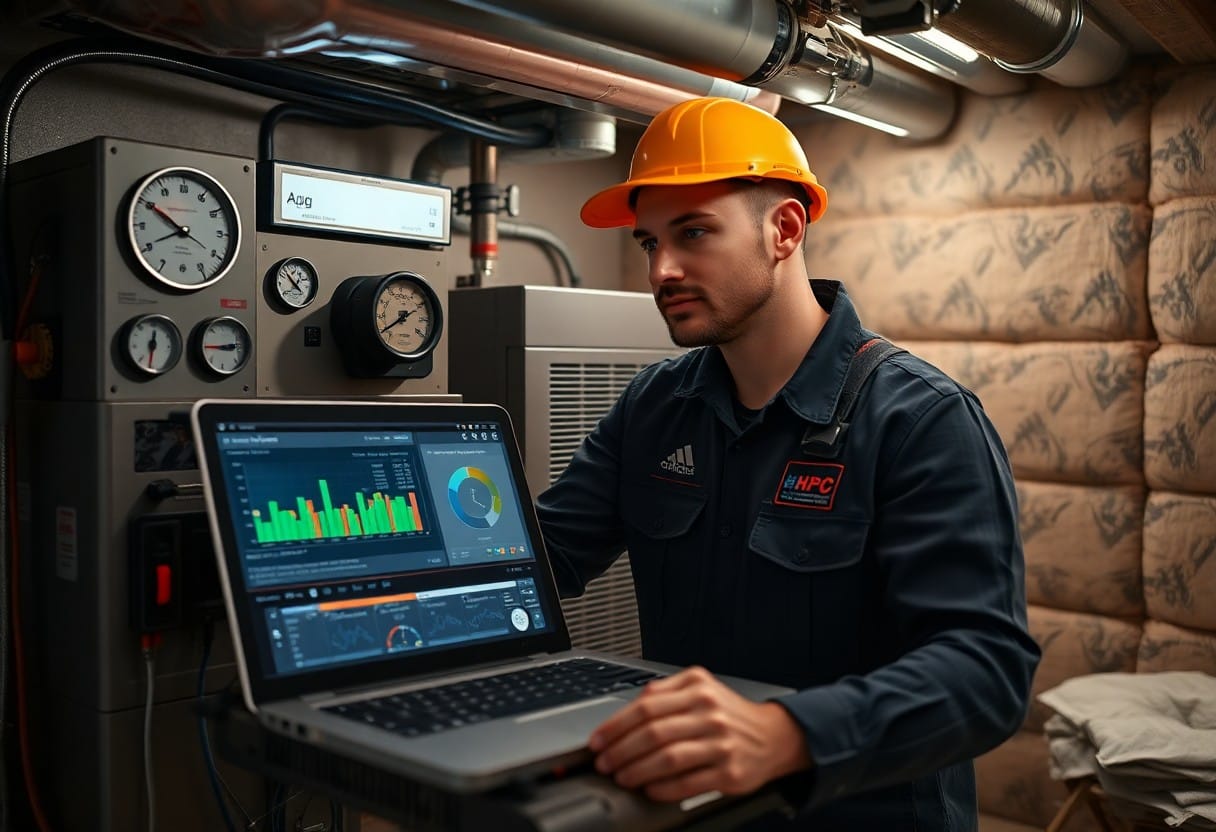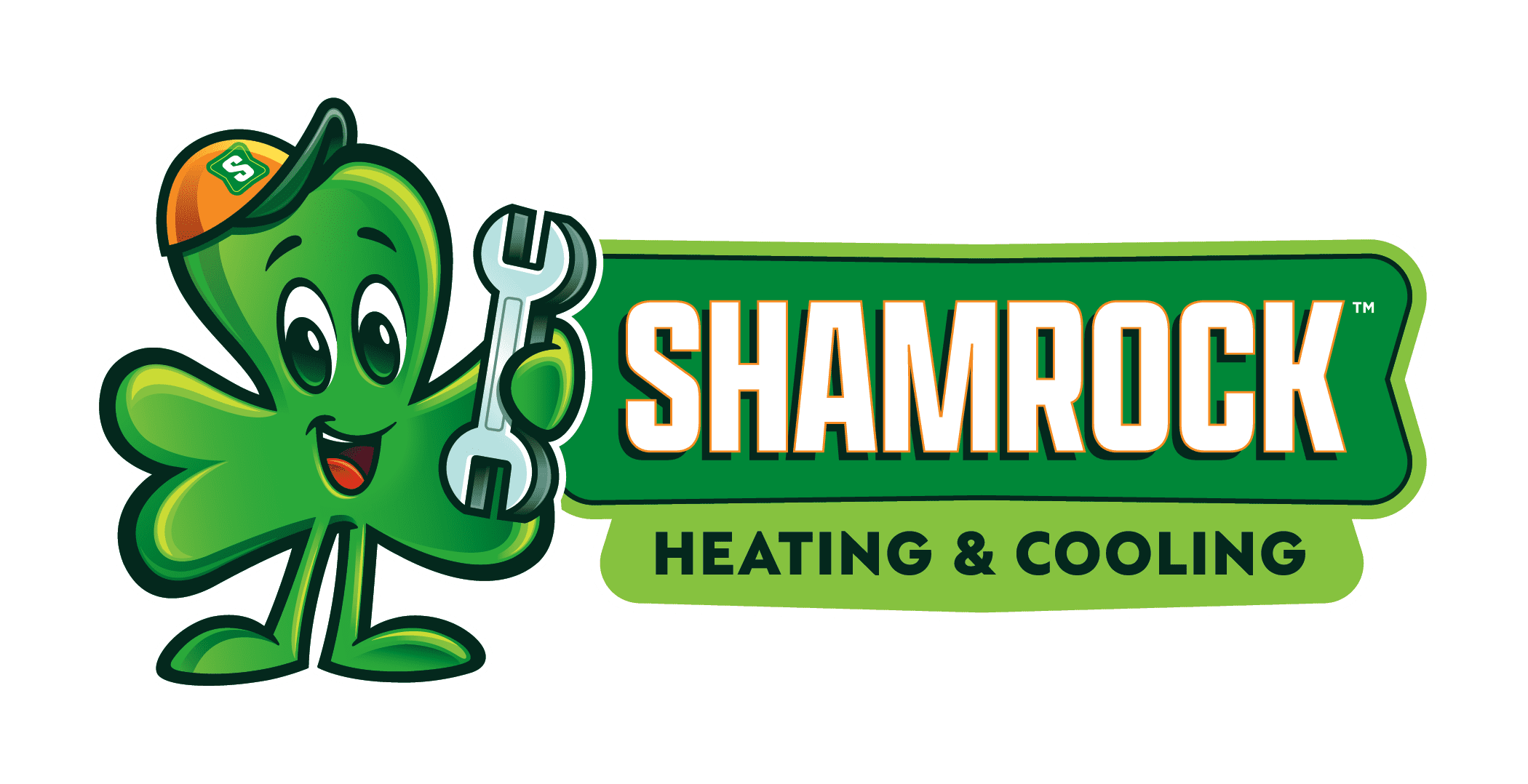Most homeowners in Phoenix overlook the significance of an HVAC energy audit in enhancing system efficiency and reducing energy costs. By assessing your HVAC system, you can identify areas of energy loss and ensure optimal performance throughout the year. This process not only promotes a comfortable living environment but also extends the lifespan of your unit. Understanding your system’s efficiency can lead to substantial savings, ultimately benefiting both your wallet and the environment.
Understanding HVAC Systems
Components of HVAC Systems
HVAC systems comprise several key components that work together to regulate your home’s temperature and airflow. At the heart of the system are the heating units (like furnaces or boilers), which generate heat, and the cooling units (like air conditioners or heat pumps) that cool down your space. Additional parts, such as ductwork, distribute heated or cooled air, while thermostats manage the system’s operation according to your set preferences. Each component plays a vital role in ensuring efficiency and comfort.
Regular maintenance of these components can enhance their performance and longevity. For instance, regularly replacing air filters and checking refrigerant levels can significantly improve your system’s operational efficiency. An understanding of how these components interact helps you identify potential issues before they escalate, keeping your HVAC system running optimally.
Types of HVAC Systems
Several types of HVAC systems are available, each suited to different needs and housing styles. The most common types include split systems, where cooling and heating functions are separate, and packaged systems, which combine both in one unit. Geothermal systems utilize the earth’s stable underground temperature to heat and cool efficiently, while ductless mini-split systems provide targeted temperature control for individual rooms or zones. Each type has its advantages, depending on your specific home layout and energy efficiency goals.
Choosing the right type of HVAC system can impact not only your comfort but also your energy bills. For example, geothermal systems, while initially more expensive, can lead to significant savings over time due to their high efficiency rates. Understanding the options allows you to select a system that fits your household’s needs. Knowing this can improve your energy consumption and ensure your home remains comfortable.
| Type | Description |
| Split System | Separates heating and cooling units. |
| Packaged System | Combines heating and cooling in one unit. |
| Geothermal System | Uses earth’s temperature for efficiency. |
| Ductless Mini-Split | Provides zoning capability for different rooms. |
| Hybrid System | Mix of traditional heating and heat pumps. |
- Types of HVAC systemsare critical for maximizing comfort.
- Energy efficiency is enhanced through proper system selection.
- Geothermal systems offer long-term cost savings.
- Ductless mini-splits allow for individualized comfort control.
- Knowing the appropriate system helps reduce energy bills and improve efficiency.
Choosing the right HVAC system can drastically influence your household’s energy consumption. Each system type has its unique features and benefits designed for both comfort and efficiency. For instance, a hybrid system can switch between gas and electric depending on energy costs, thus optimizing savings. Smart thermostats can also complement these systems, allowing for remote adjustments and scheduling features that enhance performance without sacrificing comfort. Knowing the specifications and benefits of each system helps ensure a confident choice that meets your home’s unique requirements.
| HVAC Type | Efficiency Aspect |
| Split System | Separates indoor and outdoor functions, allowing for greater efficiency. |
| Packaged System | Compact units reduce installation costs, saving you money. |
| Geothermal System | Utilizes renewable energy to minimize utility costs. |
| Ductless Mini-Split | Reduces energy loss typically associated with ducted heating and cooling. |
| Hybrid System | Offers flexibility in energy source choices, enhancing savings. |
- Selecting the right HVAC option is vital for peak performance.
- Smart technologies further enhance system efficiency.
- Renewable energy solutions contribute to sustainability.
- Cost-effective installation impacts overall budgeting.
- Knowing your system choice ensures you make informed decisions.
Importance of Energy Audits
Energy audits serve as a comprehensive evaluation of your HVAC system, identifying ways to enhance its efficiency and performance. Conducting an audit allows you to see how effectively your system is operating, pinpointing areas of energy waste. For instance, a well-executed audit can uncover leakages in ducts, inadequate insulation, or malfunctioning components, which can significantly affect your energy consumption and costs. According to recent statistics, homeowners who perform energy audits often see a reduction in their energy bills by up to 30%.
Benefits of Conducting Energy Audits
Engaging in an energy audit provides several key benefits that extend beyond immediate cost savings. By optimizing your HVAC system, you enhance not only its efficiency but also its lifespan, leading to fewer repairs and replacements over time. An energy audit can also improve your home’s air quality, reducing allergens and moisture levels that contribute to discomfort and potential health issues. With a thorough examination of your HVAC system, you can achieve a balance of performance that ensures maximum comfort.
The improvements from an energy audit can translate into substantial savings, both in the short and long term. Government incentives and rebates for energy-efficient upgrades mean that the initial investment in an audit can pay off quickly. Homeowners often receive recommendations for affordable solutions that may include minor adjustments or major upgrades, making the process flexible to fit any budget.
Common Issues Identified in HVAC Systems
HVAC systems frequently exhibit several common issues that can compromise efficiency and performance. Ductwork problems, such as leaks or blockages, can lead to significant energy loss, causing your system to overwork and inflate energy costs. Furthermore, dirty air filters not only impede airflow but also stress the system, leading to premature wear and tear. Thermostat malfunctions may also go unnoticed, preventing your HVAC from accurately regulating temperature, resulting in uncomfortable living conditions.
Other common issues include improper sizing of units for your home, resulting in either inadequate heating or cooling. Aging equipment may struggle to perform as effectively as newer models, and worn-out components can exacerbate the problem. Regular energy audits help in recognizing these issues early, allowing you to take corrective actions before they escalate into costly repairs.

The Energy Audit Process
Initial Assessment
The energy audit begins with an initial assessment of your HVAC system and home environment. You should expect the auditor to inspect all visible components, including ductwork, insulation, and existing HVAC units. Common issues such as air leaks in ducts or inadequate insulation can prove costly over time, leading to higher energy bills and increased wear on your system. Identifying these problems early can help you set priorities for improvements that yield the highest energy savings.
During this stage, the auditor may also inquire about your energy usage patterns. You’ll discuss your typical day-to-day activities, preferences regarding temperature settings, and any noticeable discomfort within specific areas of your home. This information helps tailor recommendations that align with your lifestyle and can greatly impact overall efficiency.
Data Collection and Analysis
Once the initial assessment is complete, the audit progresses to data collection and analysis. This involves a detailed examination of your energy usage, typically reviewing utility bills from the past year. You should expect the auditor to look for trends, such as seasonal spikes in energy consumption that can indicate inefficiencies in your HVAC system. The use of specialized tools, like blower door tests, will help quantify how much air is escaping your home, pinpointing problematic areas needing attention.
In this phase, comprehensive measurements of temperature and airflow throughout your home can further illustrate your HVAC system’s performance. Auditors employ various techniques, including infrared thermography, to identify heat loss or gain, allowing for a nuanced understanding of energy flow within your property.
A thorough analysis of the collected data will then inform recommended upgrades or repairs. By delineating specific areas of concern, you’ll gain insights on priority projects that can lead to immediate savings. This analysis typically identifies up to 30% in potential energy savings through recommended changes tailored specifically to your system and usage patterns.

Measuring System Efficiency
Key Performance Indicators
Understanding your HVAC system’s efficiency involves assessing various Key Performance Indicators (KPIs). Metrics such as Energy Efficiency Ratio (EER) and Seasonal Energy Efficiency Ratio (SEER) provide important insights into your system’s cooling performance. For instance, a unit with a SEER rating of 16 will consume less electricity than one rated at 14, leading to significant savings on your utility bills. Efficiency ratings are not just labels; they directly correlate with the comfort and safety of your home, especially during scorching Phoenix summers.
Annual Fuel Utilization Efficiency (AFUE) is another KPI critical for heating systems. A furnace with an AFUE of 90% converts 90% of the fuel into heat and 10% escapes, making it more economical than lower-rated units. Regularly tracking these KPIs helps you make informed decisions about repairs or replacements and reveals patterns that could indicate more serious system problems.
Tools and Techniques
Effective measurement of HVAC system efficiency relies on various tools and techniques that allow you to gather accurate data. Infrared thermography detects temperature variations across ductwork and components, identifying potential air leaks and insulation issues. Additionally, flagship tools such as manometers and anemometers reveal air pressure and flow rates, helping you assess if your system operates within desired parameters. These measurements allow you to pinpoint inefficiencies that may otherwise go unnoticed, drastically improving performance and comfort.
Combining these tools with software that analyzes energy consumption patterns can enhance your understanding of your system’s overall efficiency. This approach can uncover trends over time, providing a comprehensive view of how environmental factors affect your HVAC’s performance.
Techniques like duct testing and blower door testing offer in-depth assessments of your home’s air leakage and HVAC performance. These methods not only reveal inefficiencies but also recommend specific improvements, enabling you to take targeted actions that can yield impressive energy savings and enhance indoor air quality.
Implementing Recommendations
Cost-Effective Improvements
Beginning with cost-effective improvements can yield significant savings while enhancing your HVAC system’s performance. Simple adjustments like sealing duct leaks or adding insulation can improve airflow and reduce energy waste. For instance, studies suggest that sealing ducts can increase system efficiency by up to 30%, translating to lower utility bills and better temperature regulation in your home. Prioritizing these manageable projects allows you to maximize comfort without a hefty investment.
Consider also upgrading to programmable thermostats, which can reduce energy consumption by up to 10-15% when utilized correctly. These smart devices enable you to adjust temperatures automatically based on your schedule, optimizing energy usage during peak and off-peak hours. Investing in Energy Star-rated appliances further enhances long-term savings, with some models offering returns on investment in just a few years through reduced operational costs.
Long-Term Maintenance Strategies
Implementing effective long-term maintenance strategies is vital to sustain the efficiency improvements you’ve achieved through your energy audit. Regularly scheduled HVAC system check-ups, typically bi-annually, allow technicians to identify and address potential issues before they escalate. This not only extends the life of your system but ensures it operates at peak performance when you need it most.
Incorporating regular filter changes into your maintenance routine is also critical. Clogged filters can restrict airflow and force your system to work harder, leading to increased energy usage. Aim to replace or clean filters every 1-3 months; doing so can boost your system’s efficiency by up to 15%, making a noticeable difference in your energy bills.
Additionally, documenting maintenance activities and system performance trends helps you identify patterns that may indicate the need for further adjustments or significant overhauls. Engaging in a proactive approach ensures your HVAC system remains efficient and reliable through changing seasons, ultimately enhancing your home’s comfort and reducing ongoing energy costs.
Seasonal Considerations
Adjusting Systems for Summer Efficiency
Summer in Phoenix can push your HVAC system to its limits, making adjustments vital for maintaining efficiency. Start by setting your thermostat at a higher temperature, ideally around 78°F, to reduce energy consumption without sacrificing comfort. Regularly cleaning or replacing air filters ensures adequate airflow, significantly impacting system performance—dirty filters can decrease efficiency by as much as 15%. Additionally, using ceiling fans can help circulate cool air, allowing you to raise the temperature on your thermostat even further, ultimately saving on cooling costs.
Consider scheduling a professional inspection before the peak heat arrives. A technician can check refrigerant levels and inspect ductwork for leaks, which can siphon away 30% of cooled air if left unaddressed. Investing in a programmable thermostat allows for further savings, as you can automatically adjust temperatures during hours when you are away from home. These proactive measures bolster your HVAC system’s ability to handle the intense summer heat effectively.
Preparing for Winter Performance
As the temperatures drop, preparing your HVAC system for winter is vital to maintaining comfort and efficiency. Start by cleaning the outdoor unit, removing debris that could hinder performance. In addition, check insulation around ductwork and ensure that windows and doors are sealed to prevent heat loss. A seal leak can waste up to 20% of your heated air, so investing in weather-stripping can yield substantial savings.
Your heating system should also receive attention, particularly with respect to the thermostat settings. Lowering the setting to 68°F provides warmth while reducing energy use, and utilizing programmable features can optimize performance when you are home versus away. Regular maintenance checks in the fall can include system tuning and filter changes, which bolster overall efficiency as winter approaches.
Focusing on system preparation allows for a significant reduction in energy bills throughout the winter months. For best results, schedule a comprehensive maintenance check at least once before the cold weather arrives. This helps ensure that all components are operating optimally and that the system is clean. Clearing obstructions from registers and conducting a thorough evaluation of your furnace not only enhances efficiency but also contributes to a longer lifespan for your equipment, ultimately saving costs in replacements and repairs.
Summing up
Ultimately, performing an HVAC energy audit enables you to identify inefficiencies in your system that can lead to higher energy costs and decreased comfort in your space. By taking proactive steps, you can enhance the performance of your heating and cooling systems, ensuring they operate at peak efficiency throughout the year. This not only results in lower utility bills but also extends the lifespan of your equipment.
By addressing the findings of your energy audit, you empower yourself to make informed decisions about upgrades, maintenance, or operational adjustments. Incorporating such improvements fosters a more energy-efficient environment, ultimately contributing to a healthier planet while providing you with a more comfortable living or working space. Embracing these practices positions you to enjoy consistent performance from your HVAC system across all seasons.

